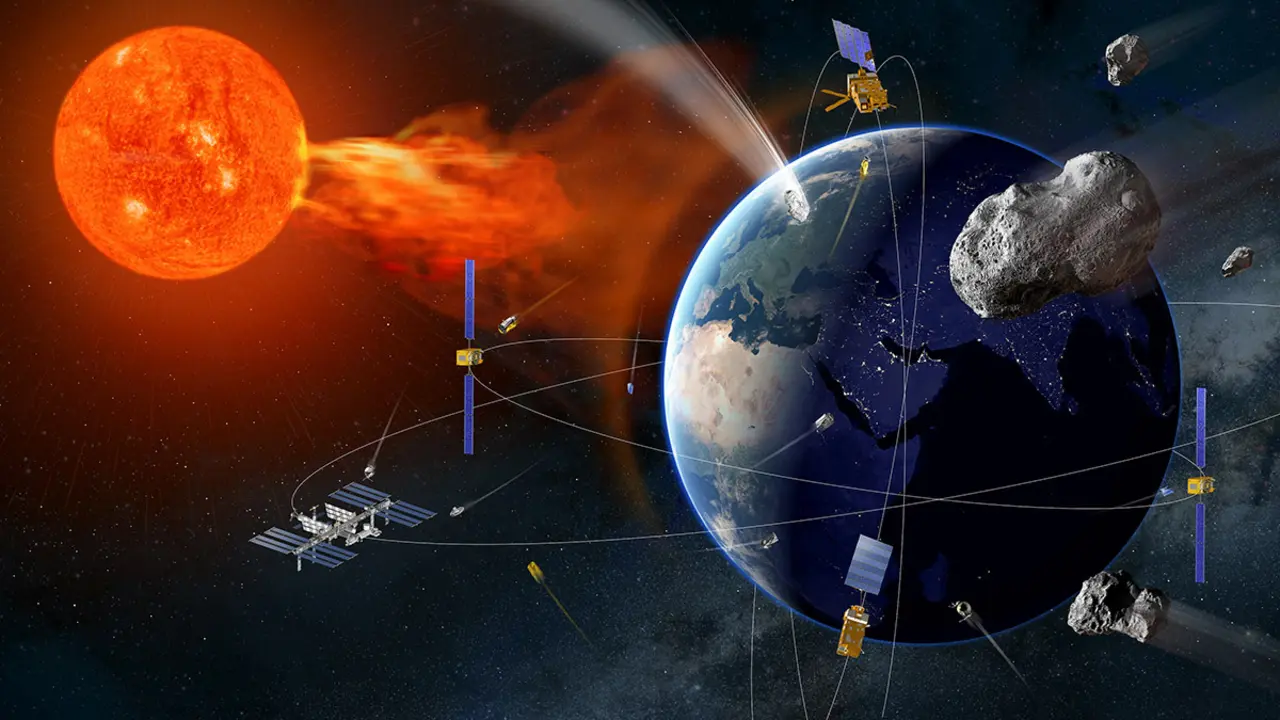The second assault on the Moon begins in 2022

The starting signal for the United States to set foot on the Moon again coincided with the end of the 12 chimes of New Year's Eve. With them, NASA closes 2021, moves its main focus away from Mars and opens a five-year period in which the Earth's natural satellite becomes its main objective for the second time.
From now on, the Red Planet takes a back seat and the Moon takes the ultra-terrestrial limelight. President Joe Biden and NASA Administrator Bill Nelson want American taxpayers to relive the glory of the 1960s and 1970s and see men and women of different sexes and races fly to Selene and walk on its dusty surface. Europe, Japan and other nations are invited to participate in the grand project dubbed Artemis.
NASA has scheduled for this spring the Artemis I mission, the inaugural firing of its new space behemoth, known as the Space Launch System, or SLS. It will be an unmanned test flight, in which a giant rocket more than 100 metres high will pass through the Earth's atmosphere to place an unmanned Euro-American Orion capsule around the Moon.

The SLS is of similar dimensions, but much more powerful than the gigantic Saturn V, the rocket that carried the American astronauts of the Apollo missions to the Moon. It is worth remembering that since the three Apollo 17 passengers left Selene on 14 December 1972, no other human being has set foot on our natural satellite. And that was a whopping half a century ago.
In its role of transport to the Moon, the SLS has an alter ego. It is called Starship, a reusable vector from the SpaceX company of tycoon Elon Musk. It is due to demonstrate its orbital flight capabilities next March, although it has already been chosen to deposit the first Americans on the Moon. NASA wants both launchers to also be used to take the path to Mars, where our satellite is a starting base that must be consolidated and of which the future cislunar Gateway complex forms part.

It will be from 2025 when NASA will give the green light to manned flights in either of the two rockets, whose descent modules will deposit the first astronauts returning to the desolate landscape on lunar soil. Meanwhile, private companies such as Astrobotic, Intuitive Machines, Rocket Lab and the Peregrine 1 and Nova-C probes will send projects to the Moon to test new robotic technologies.
Automatic missions will also be implemented this year by countries that do not have the overwhelming potential of the United States. This is the case of the Emirates, with its small Rashid rover; Japan, with its SLIM and Hakuto-R modules; South Korea, with its KPLO project; India, with its Chandrayaan-3 rover; and even Russia, with its Luna 25 scientific probe, which will depart in July and is the Kremlin's first mission to the lunar surface for more than 45 years.
China is keeping a low profile for the moment. Conscious of its lack of experience in manned flights to our natural satellite, it is reserving the leading role for future years. It is doing so because all its attention is focused on completing the basic assembly of the Tiangong space station. The new 20-tonne Wentian module will be docked in June and the Mengtian in August so that, from 2023, Chinese and third-country astronauts can conduct experiments in cooperation with the United Nations Office for Outer Space Affairs.

India does not have an orbital complex, but plans to launch its first two manned capsules in the second half of the year, albeit without people on board. Inside will be a humanoid robot called Vyommitra to collect flight parameters. The first manned rocket is expected to take off in 2023, which would make it the fourth country to be able to place humans around the Earth.
Space tourism is progressing at an uneven pace. US tycoon Jeff Bezos, after the success of his New Shepard capsule with three ascents and descents in 2021, plans a minimum of six paid suborbital flights per year throughout the year. Richard Branson's Virgin Galactic also plans to start regular flights, but must first complete the full validation of SpaceShipTwo. On the commercial side, the Starlink and OneWeb mega constellations of broadband communications satellites will continue to be deployed.

A major NASA-funded project is the small space plane Dream Chaser. Developed by the Sierra Nevada company to transport astronauts, its external shape is reminiscent of the Space Shuttle, but it is much smaller. Its first activity is due to take place shortly and will be a resupply mission to the International Space Station (ISS). This coincides with the decision announced by the White House on 31 December that NASA is extending its participation in the ISS until 2030, something that Russia has yet to confirm.
The European Space Agency (ESA) has two major challenges in the next 12 months. One is the liftoff of the JUICE probe in mid-2022, which after an eight-year journey through the cosmos will dive to Europa and Ganymede - two icy moons of Jupiter - in search of signs of life. The other challenge is once again the Red Planet, which continues to capture the attention of scientists.

In cooperation with the Russian space agency Roscosmos, ESA has yet to complete the long-delayed ExoMars 2022 mission, whose orbiter has been orbiting the planet since October 2016. It awaits its second component - the Rosalind Franklin rover - which is scheduled to launch in the second half of 2022.
Russia is providing the descent module and ESA the robotic vehicle, with a major contribution from the Spanish space industry. In June 2023 it will reach Mars, where the powerful drill attached to the Rosalind Franklin rover will drill into the subsoil in search of organic molecules that can identify traces of life. And to close the year, ESA will hold its ministerial summit in Paris, which must approve funding for its new projects.

On the rocket front, ESA plans the first flight of the smaller Vega C and the more powerful Ariane 6, whose full development is progressing apace for a maiden flight by the end of 2022, which is no mean feat. Ariane 6 is the successor to the Ariane 5 currently in service, which has only flown three times in 2021, the last time on 25 December, to launch the large James Webb space telescope into orbit.
In Spain, PLD's Miura 1 suborbital launcher is due to lift off from Huelva at the end of the year. In Asia, Japan's H3 rocket from Mitsubishi Heavy Industries, which aims to improve Tokyo's competitiveness in the global market, will debut, while Beijing will unleash several new rockets, some allegedly from private companies. And the US will debut the methane-powered Vulcan Centaur, which will be the Pentagon's workhorse for getting its military platforms into space.









